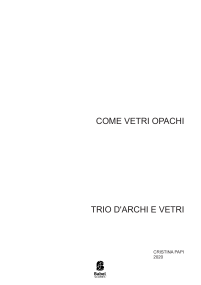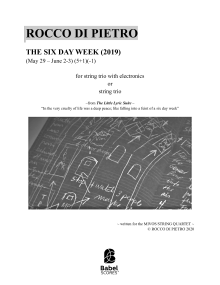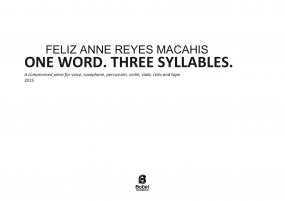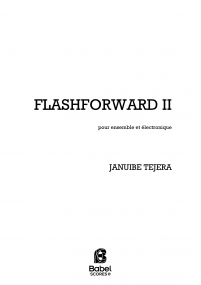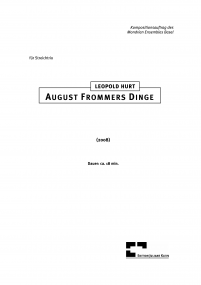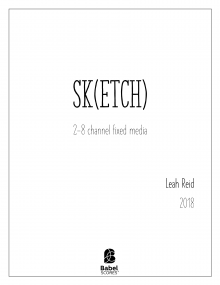Teraneler
10,30 €
Versión impresa (+14,80 € impresión y envío). Colissimo7-14 days aprox.
Versión digital (+0,00 €) para descarga
Al comprar una partitura, usted puede contactar al compositor aquí mismo!
Especificaciones
Region
North America (Canada - USA)
Estimated Duration
6 - 10min
Date
2007
ISMN : 979-0-2325-1415-4
In Stock
Descripción
Teraneler
I have always found it difficult to work with short forms. As I set out to write Teraneler, I took inspiration from shorter forms of poetry. In this piece, I took as my starting point a Persian verse form often made up of four line verses, called Terane. This form, made famous by the 12th century poet Omar Khayyam, has a very specific meter and rhyming scheme, which is often AABA.
Instead of simply carrying this form to music, I made use of the double meaning of Terane which means melody in Persian and tedious repetitiveness in Turkish. The two movements take up each of these meanings. The first one grew out of harmonizing a simple chant-like melody with the harmonies derived from ancient Greek tetrachords. This movement is quite homophonic. The second movement takes from where the first one has left, but this time adding some heterophony and polyphony to the texture but this texture is disrupted by constant repetition of perfect fifths. Each movement also uses the idea of repetition in different ways. While the first one has a very subtle ABAB form, in the second one, the contrast between sections (A and B) are much more dramatic and disconnected from each other.
Add to list
- Login to create your own lists
Teraneler
I have always found it difficult to work with short forms. As I set out to write Teraneler, I took inspiration from shorter forms of poetry. In this piece, I took as my starting point a Persian verse form often made up of four line verses, called Terane. This form, made famous by the 12th century poet Omar Khayyam, has a very specific meter and rhyming scheme, which is often AABA.
Instead of simply carrying this form to music, I made use of the double meaning of Terane which means melody in Persian and tedious repetitiveness in Turkish. The two movements take up each of these meanings. The first one grew out of harmonizing a simple chant-like melody with the harmonies derived from ancient Greek tetrachords. This movement is quite homophonic. The second movement takes from where the first one has left, but this time adding some heterophony and polyphony to the texture but this texture is disrupted by constant repetition of perfect fifths. Each movement also uses the idea of repetition in different ways. While the first one has a very subtle ABAB form, in the second one, the contrast between sections (A and B) are much more dramatic and disconnected from each other.
Instrumentation
violin|Viola|Cello|
Recording
Gabriela Diaz - violin; Wendy Richman - viola; Alexei Gonzales - cello
Score Details
Format - A4 / US Letter
Pages - 16
Pages - 16





